(By William Guy Wall, Troy From Mount Ida (1821-1822) Photo: Metropolitan Museum of Art)
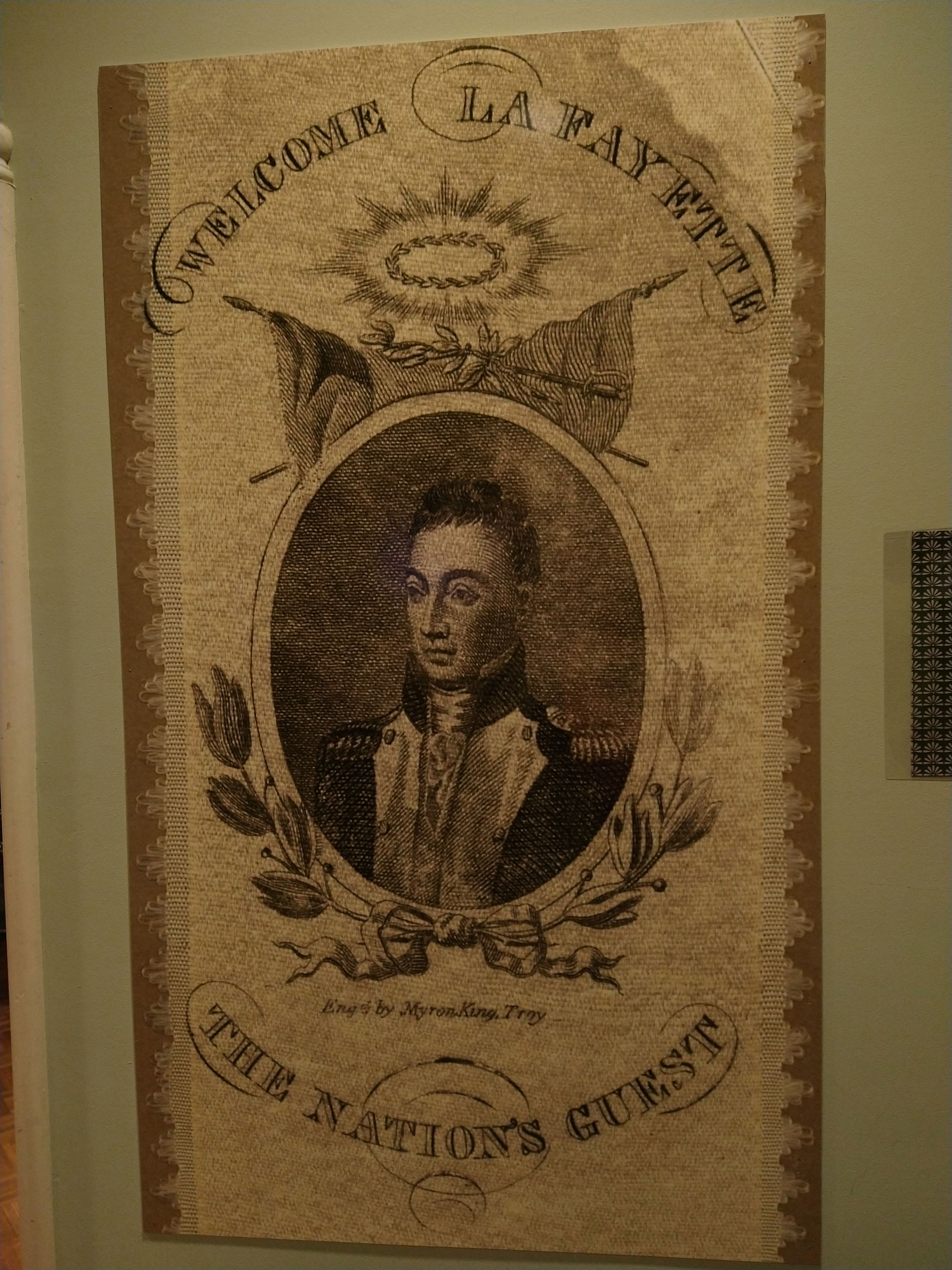
(Farewell Tour Souvenir Ribbon, engraving on silk by Myron King, Troy,1824. Collection of the Hart Cluett Museum, Troy, NY)
With time-travel still unavailable, I didn’t really join this French hero of the American Revolution in person, but I did the next best thing: I narrated a brand-new audio tour of his visit up the Hudson River two hundred years ago. Along the way, I heard fascinating stories, encountered impressive people, and gained a deeper understanding of the political, social, and cultural trends of our country in the 1820s.
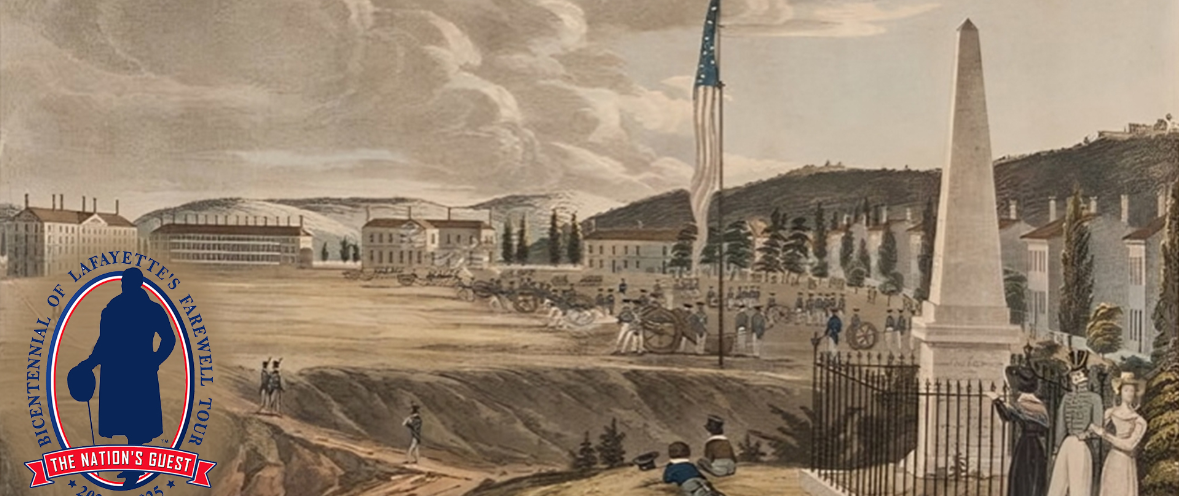
(By George Catlin, The Plain at West Point. Print (1828). Photo: Amon Carter Museum of American Art)
First, a quick refresher on the Marquis de Lafayette: He was a French aristocrat, who from a young age was drawn to the ideals of The Enlightenment: liberty, constitutional government, and the separation of church and state. The American colonies’ fight for independence appealed to him deeply, and he provided ships, men, money, and materiel to the American cause. He also fought in the Continental Army, becoming a close friend and trusted aide to George Washington. In fact, Lafayette was a leader at the Siege of Yorktown, the last major battle of the Revolutionary War!
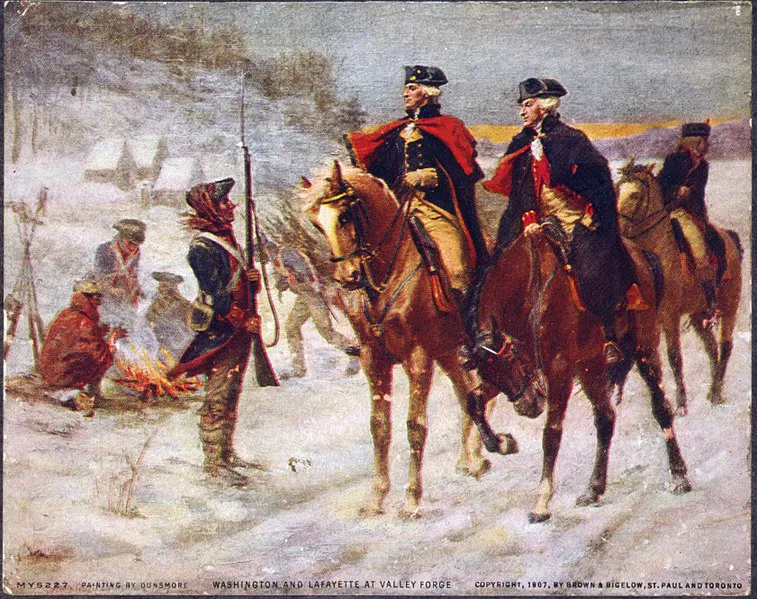
(Washington and Lafayette at Valley Forge by John Ward Dunsmore. Library of Congress)
A half-century later, then-U.S. President James Monroe invited Lafayette to make a grand “Farewell Tour” to the United States. In 1824 and 1825, the Marquis did just that…travelling for more than a year through all 24 states and over thousands of miles. Here's a map of his visit to Troy, NY in August of 1824.
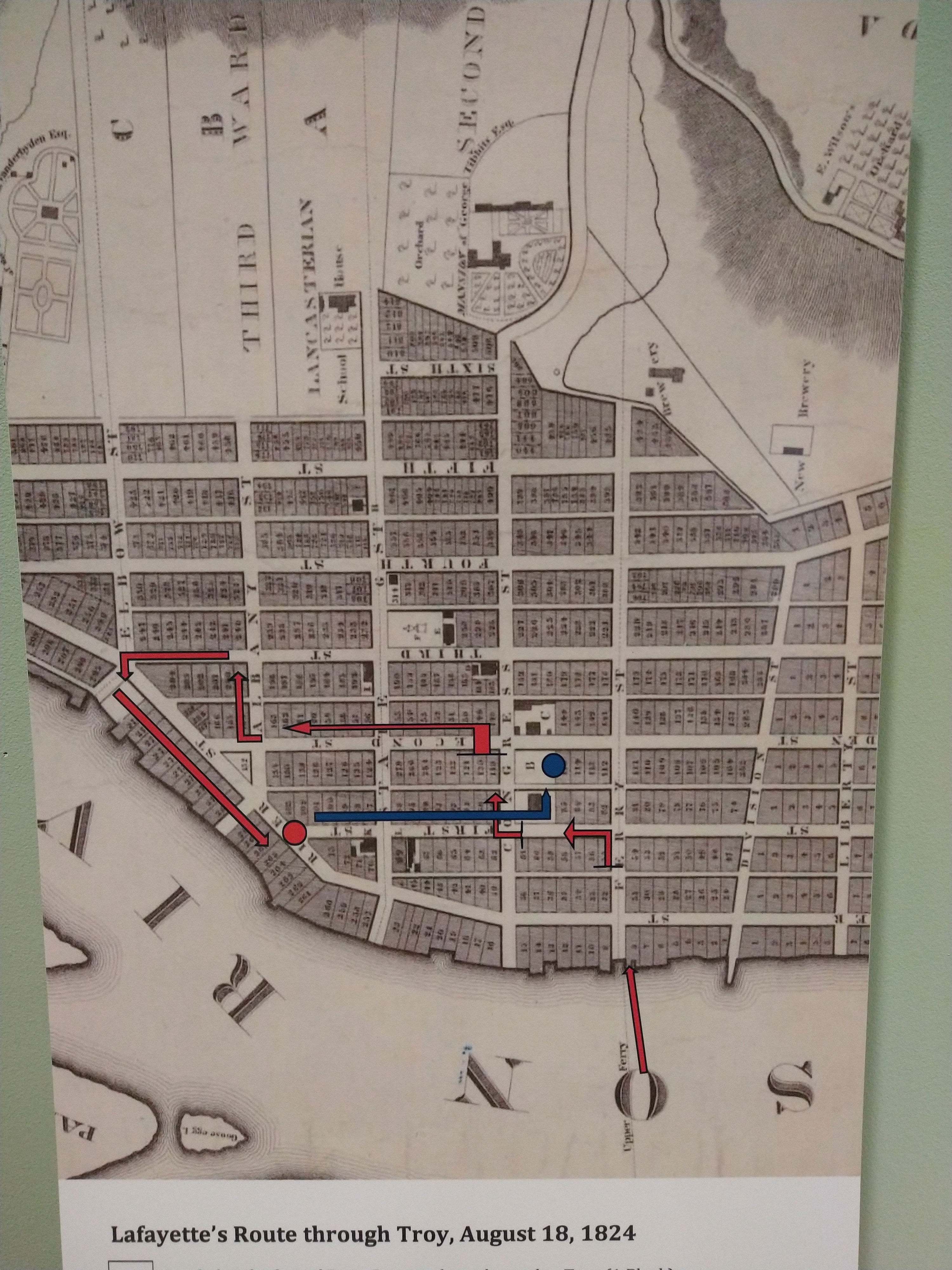
(Reproduction of original 1818 City of Troy Map, Collection of the Hart Cluett Museum, Troy, NY)
Now, fast-forward two hundred years later and a group called the American Friends of Lafayette. The AFL is an historical and patriotic society whose purpose is to educate the public about the life and career of General Lafayette. Right now, the AFL is celebrating the Farewell Tour’s Bicentennial, with public events, commemorations, parties, and audio tours covering some of the states that the General visited back in 1824 and 1825.
And that…is where I come in. After narrating the NH and NY City tours, I was asked to interpret the AFL’s Hudson River tour as well. Of course, I said “yes!”
When the tour went live, AFL President Alan Hoffman and I travelled to Troy, NY to celebrate. We were hosted by the lovely staff at Troy’s Hart-Cluett Museum, where Alan gave an overview of the Farewell Tour and shared several audio stories.
VISIT TRAVELSTORYS TO TAKE THE TOUR
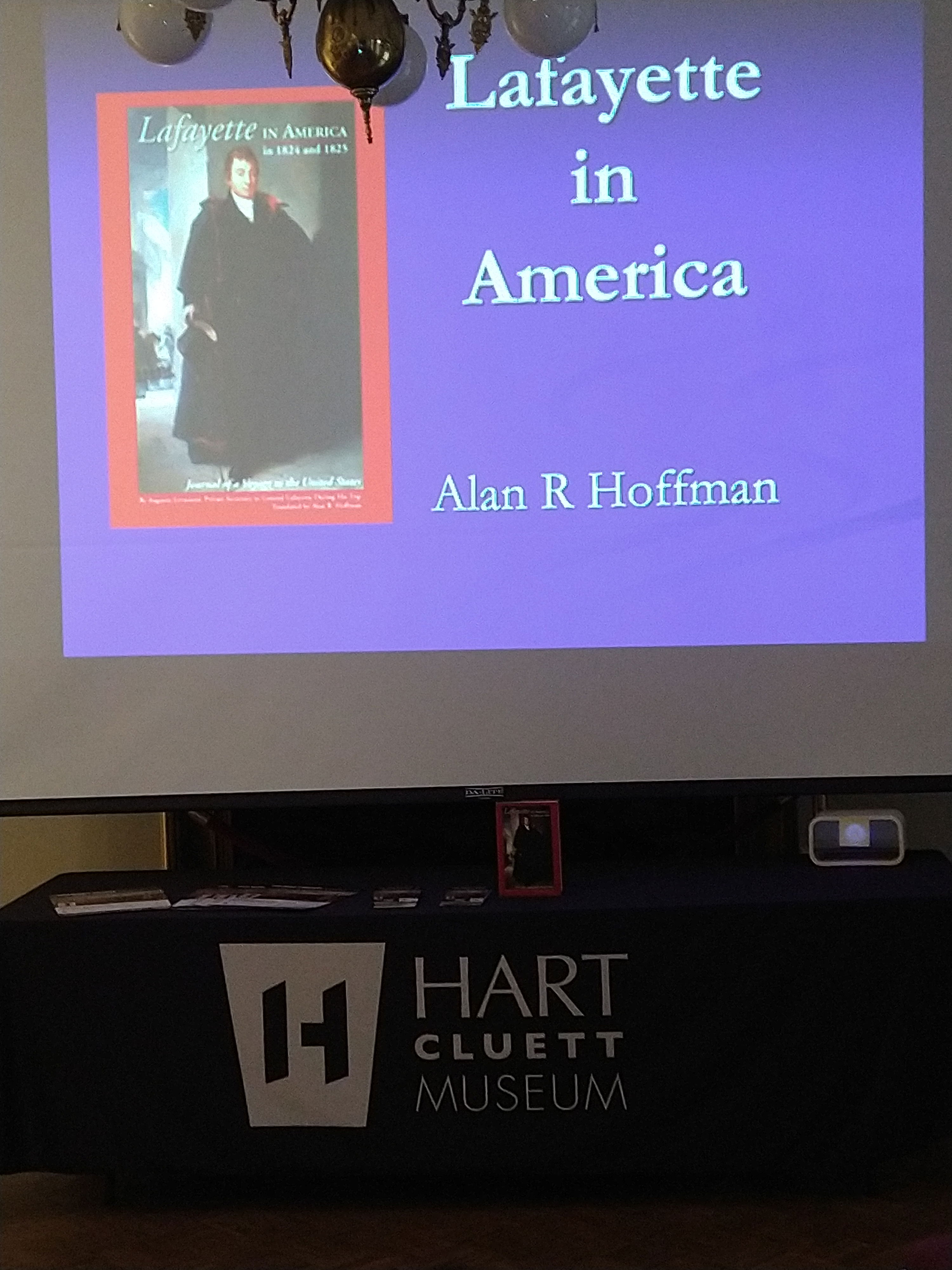
We also heard from local historians about the citizens involved in Lafayette’s visit to the Hudson River Valley two hundred years ago.
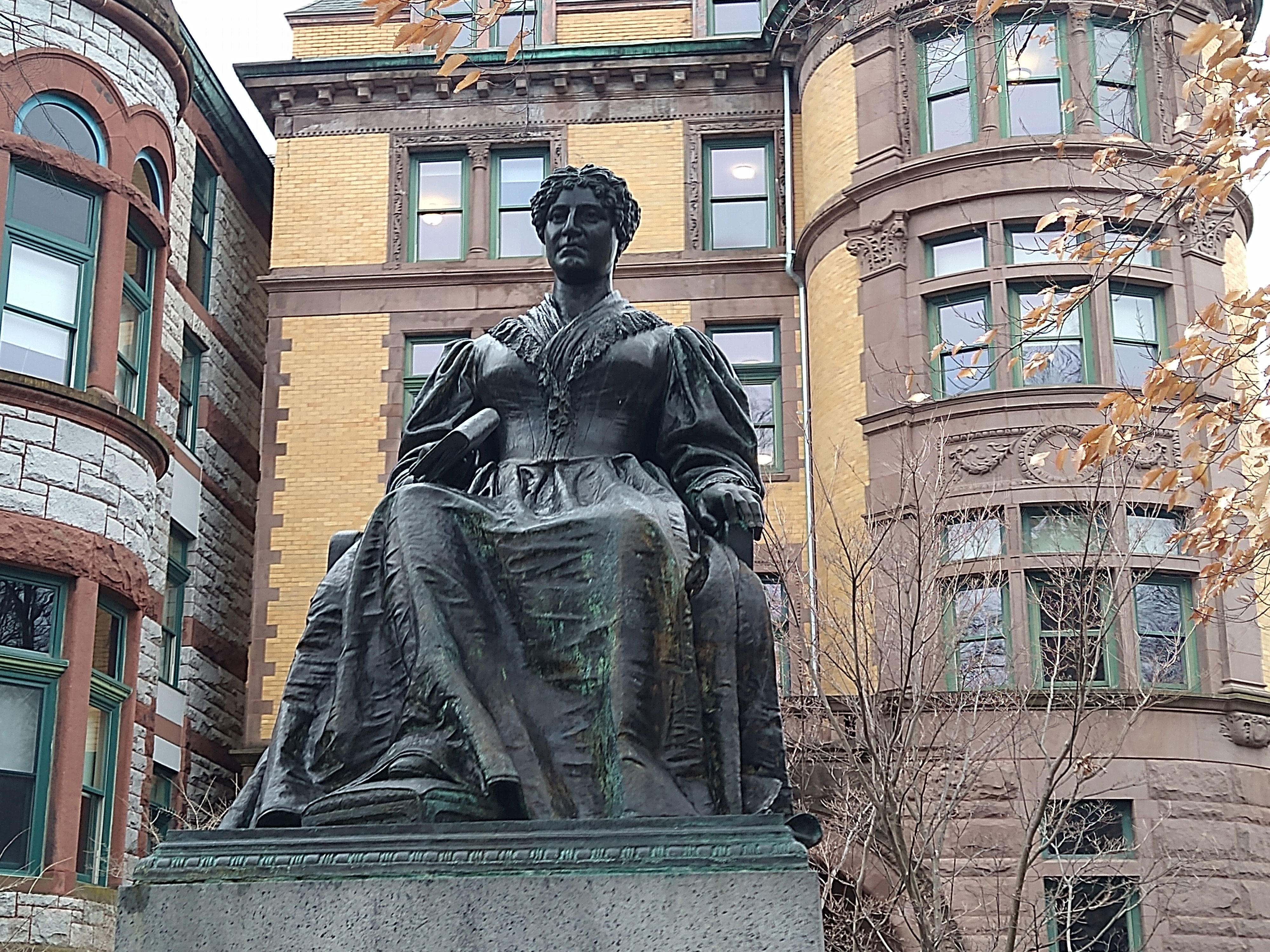
One such local luminary was Emma Hart Willard, educator and founder of the Troy Female Seminary. Back in the 1820s, women were rarely key speakers or presenters during the Farewell Tour. But Emma Hart Willard was an exception…and she was an exceptional woman, as you’ll learn in the script below, written by the AFL. It’s story number 11 on the TravelStorys tour “Lafayette in New York 1824.” Enjoy!
Troy Female Seminary: Women’s Education and Abolition.
The statue here in this park is that of Emma Hart Willard, a leading proponent of female education in America. Her innovative school for girls, the Troy Female Seminary, once stood on this site, which is part of the campus of Russell Sage College today. The seminary was the first school of higher education in the United States that provided women with an education comparable to what was available to men.
Lafayette’s visit to the school was one of many he made to support women’s education during the Farewell Tour. When he arrived at the entrance to today’s Sage Park (around the corner from here, on Congress Street), Lafayette found many townswomen waiting eagerly to welcome him, along with students, teachers, and Emma Willard herself. An arbor covered with evergreens and flowers at the park entrance displayed a banner that read, “America commands her daughters to welcome her deliverer, La Fayette.” The general was welcomed by Eunice Pawling, wife of Albert Pawling, Troy’s first mayor, who, like Lafayette, had been an aide to George Washington during the American Revolution. Above the doorway to the school building was another decorated arch with a banner that read, “We owe our schools to Freedom; Freedom to La Fayette.” Students sang a song composed by Willard for the occasion. Later, she presented him with a copy of her revolutionary Plan of Female Education during their private conversation in her parlor.
Willard continued her friendship with Lafayette, corresponding with him after he returned to France. She even visited him at his French country home, La Grange, during a European trip in 1830. He opened many doors for her as she researched female education in France and England. Willard shared Lafayette’s letters with the young women of her school. According to one seminary alumna, the students were required to translate the letters from French to English as an exercise. Today, the statue of Emma Willard recalls both the importance of her school and the visit of the “Nation’s Guest.”
After his visit to the seminary, Lafayette went by carriage to the ferry dock, just a few blocks away, to return to Albany. In his journal, Lafayette’s secretary, Auguste Levasseur, noted that Lafayette had “… observed with pleasure that the Colored population, which is not very numerous (around 300) freely joined its good wishes for the Nation’s Guest with those of the White population. One counts now hardly 30 Slaves in the City and its dependencies. Three more years, and liberty will not have to blush any more in the presence of men of Color …!” As Levasseur alludes to in his journal, slavery in New York was set by statute to expire in 1827. The city of Troy’s early involvement with the abolition movement and its important early community of free Black citizens surely interested Lafayette, given his advocacy for the abolition of slavery.